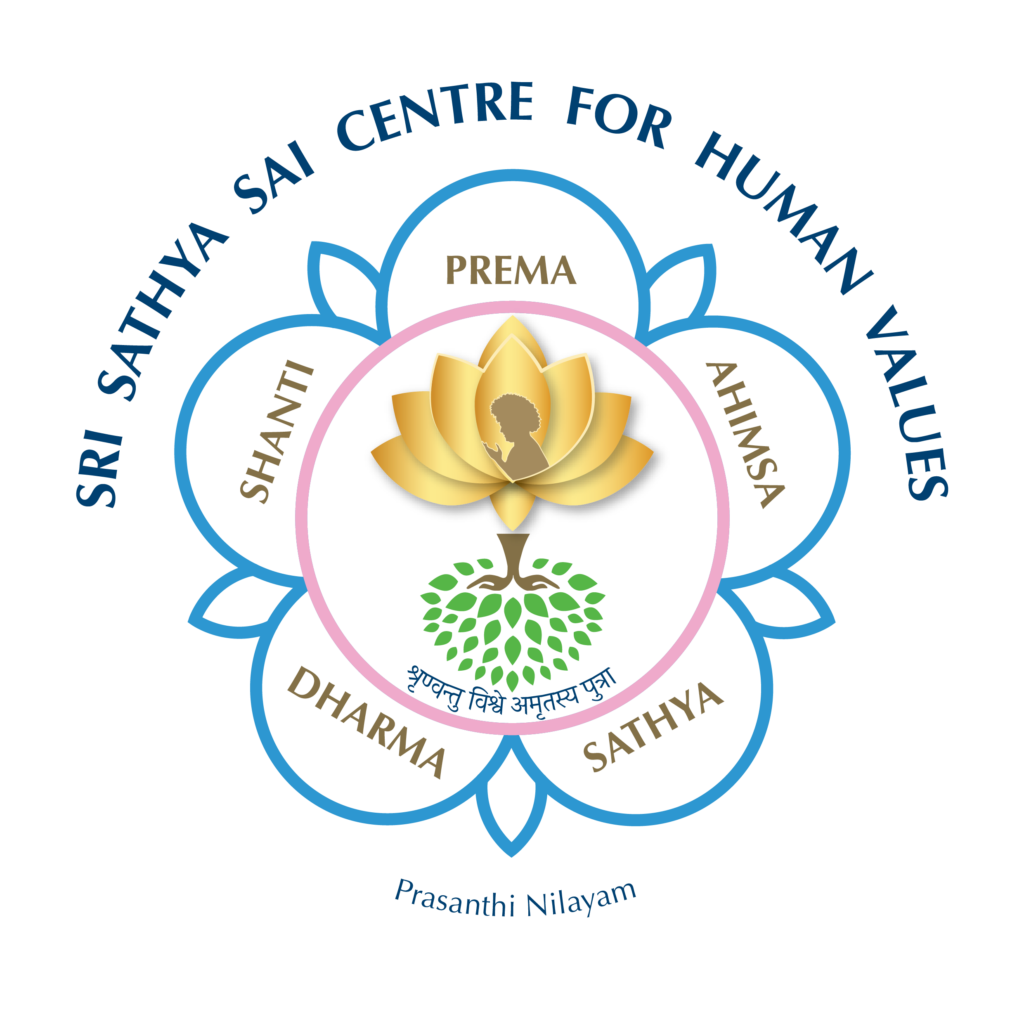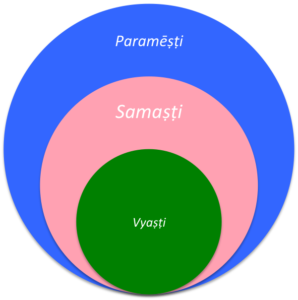Premise:
- Human being is a child of immortality/Divinity (Amr̥tasya putra)
- Human beings have forgotten their roots and reality.
- Training in human values is to bring out that Divinity which is latent – through practice of human values and a spiritual way of life.
Understanding:
ऊर्ध्वमूलमध:शाखमश्वत्थं प्राहुरव्ययम् |
छन्दांसि यस्य पर्णानि यस्तं वेद स वेदवित् || 15-1||ūrdhva-mūlam adhaḥ-śhākham aśhvatthaṁ prāhur avyayam
chhandānsi yasya parṇāni yas taṁ veda sa veda-vit (15-1)The wise speak of the peepul tree having its root above and branches below,
whose leaves are the (vēdik) hymns: he who knows it is a knower of the Vedas. (Bhagavad gīta, chapter 15, verse 01)
As taught by Bhagawan Sri Kr̥ṣṇa in the 15th Chapter of the Bhagavad gīta, Bhagawan Sri Sathya Sai Baba describes life as an inverted aśhvatta tree with its branches as different fields of knowledge and action, gaining nourishment from the eternal, unchanging Self or Ātma. In simple words, gaining nourishment from the conscience (Ātma dharma), one must perform all the duties (para dharma) in the world diligently and make apparent our true nature (Ātma).
Elements of our Logo and its significance:

The Golden Lotus in the middle represents the source (mūlaṁ), the Spiritual Heart or conscience represented by the eight petalled lotus (anāhata cakra). The lotus represents being in the world but not of it, that is to say to remain unaffected by the vagaries of the worldly experiences, just as a beautiful lotus blossoms in slush, grows in it, yet is untouched by it. The silhouette of Bhagawan Baba in the centre is to signify that Divinity or Bhagawan is the Lord of our heart.
The hands that form the trunk of the tree emanates from the Golden Lotus represents karma yōga – performance of duty to the one’s utmost ability without any expectations. The green leaves represent prosperous life nourished by the conscience. The colour green signifies prosperity and harmony with nature. It is the aura of the anāhata cakra.
The pink ring signifies Divine Love that encompasses all the values. Love expressed unconditionally to the Divine in all of creation and a perfect state of equanimity to all the dual experiences in life born of surrender to the Divine, is Bhakti yōga.
The outer lotus in blue represents the limitless consciousness, unity underlying diversity, that is Brahman (Divinity); described in the Taittirīya upaniṣad as ‘Satyaṁ jñānaṁ anantaṁ brahma’ – Brahman is Truth, Knowledge of the Self, Infinite. This represents jñāna yōga. The multipetals of this blue lotus represent the sahasrāra cakra.
Bhagawan Baba taught Human Values as these five fundamental manifestations of Divinity in humanity namely, Prema (Love), Sathya (Truth), Dharma (righteousness), Shanti (Peace) and Ahimsa (Non-violence).
Here is an excerpt from a discourse of Bhagawan Baba that inspired the design of the Logo:
In every human being there are seven cakras. These chakras have been interpreted in various ways. Among these, the two most important ones are the hr̥daya cakra and the sahasrāra cakra. They are described as lotus flowers hr̥daya kamala and the sahasrāra kamala , the former having eight radiant petals, and the latter a thousand petals. It is said that a thorough understanding of the principles underlying these two chakras would facilitate the attainment of divinity. The flower of the heart represents God, while each petal of the sahasrāra represents sixteen aspects of Divinity. Thus, the thousand petals of sahasrāra represent in all, sixteen thousand aspects of Divinity… When one aspire to attain Divinity one must become a petal in the heart of Divinity. One must be bereft of desire for the fruits of action and be in state of supreme peace and equanimity. One’s hr̥daya must be saturated with Prēma (Love) and experience Ānanda (bliss)… The yōgis took refuge in the eight petal lotus hr̥daya kamala and ascended to the sahasrāra kamala and experienced Ānanda (bliss). In order to attain Divinity in this manner one must implicitly practice the Daiva ājña (Divine Directives).
Bhagawan Sri Sathya Sai Baba, Divine Discourse delivered on 19th May 2000
Our logo also represents:

Through practice of human values that originate from our conscience, human life is a progression from individual transformation (Vyaṣṭi) – to harmony in world through expression of selfless Love as service (Samaṣṭi) – to complete realization of Unity underlying diversity of this vast creation (Paramēṣṭi).
Our motto:
श्रृण्वन्तु विश्वे अमृतस्य पुत्रा
Śr̥ṇvantu viśvē amr̥tasya putra
“Listen, the world over, O Children of Immortality” (Ṣvetāśvatara upaniṣad, Chapter 2, Verse 5)
Bhagawan Baba often thundered this upaniṣadic verse reminding humanity of its destiny and identity. Taken from the Ṣvetāśvatara upaniṣad, this verse is a clarion call to all the people world over to awaken to their true nature of being ‘children of immortality’. Immortality here is in reference to the imperishable nature of the Self or Ātma and not to the longevity of the physical body that is bound to perish.
